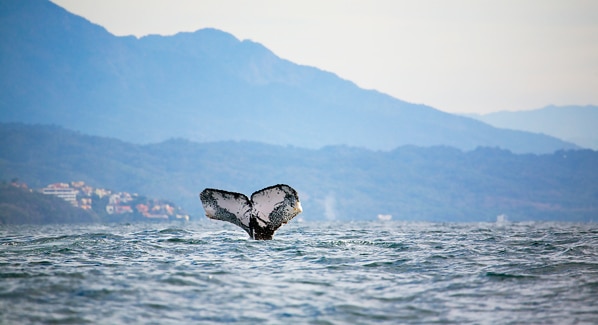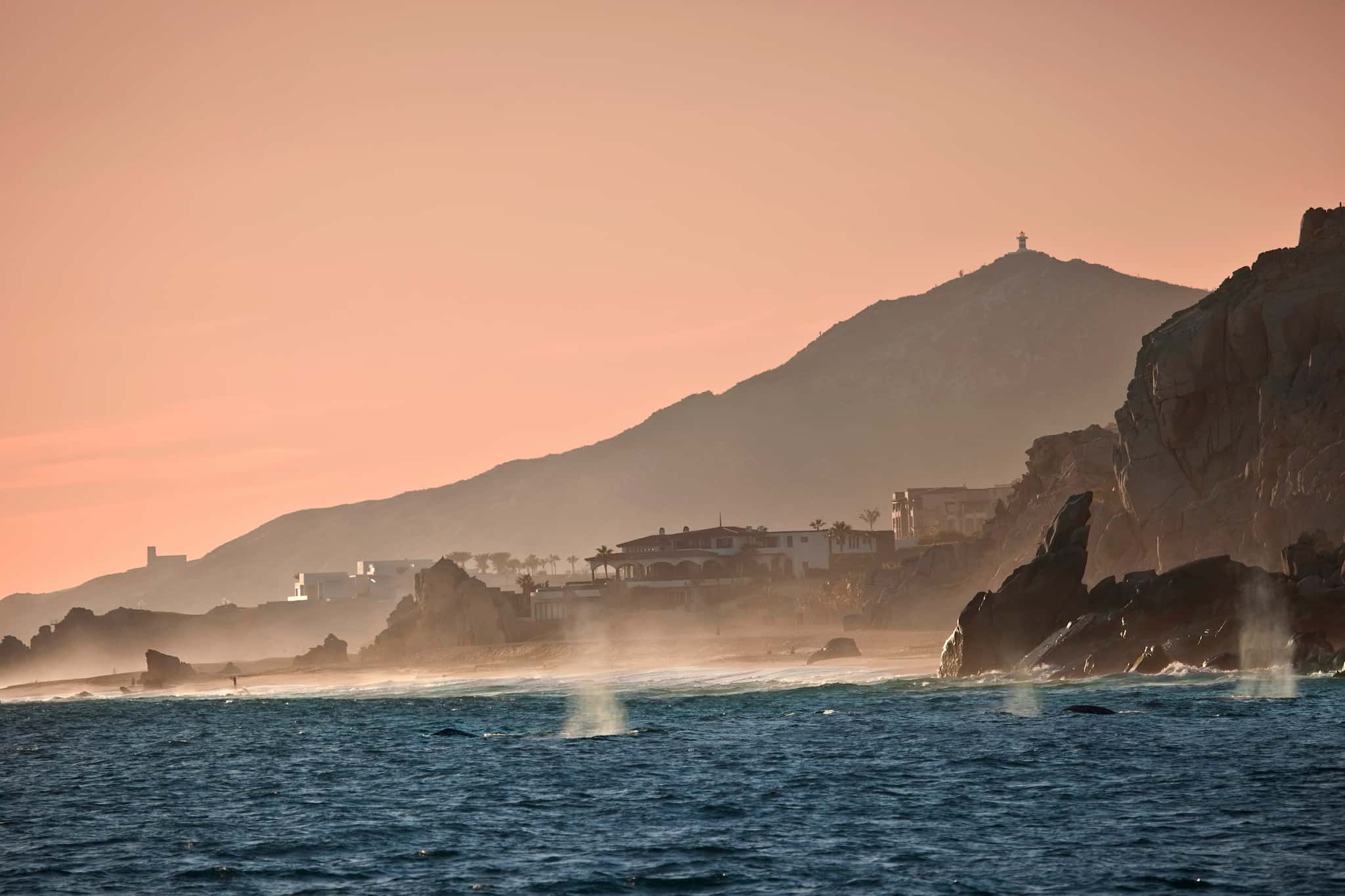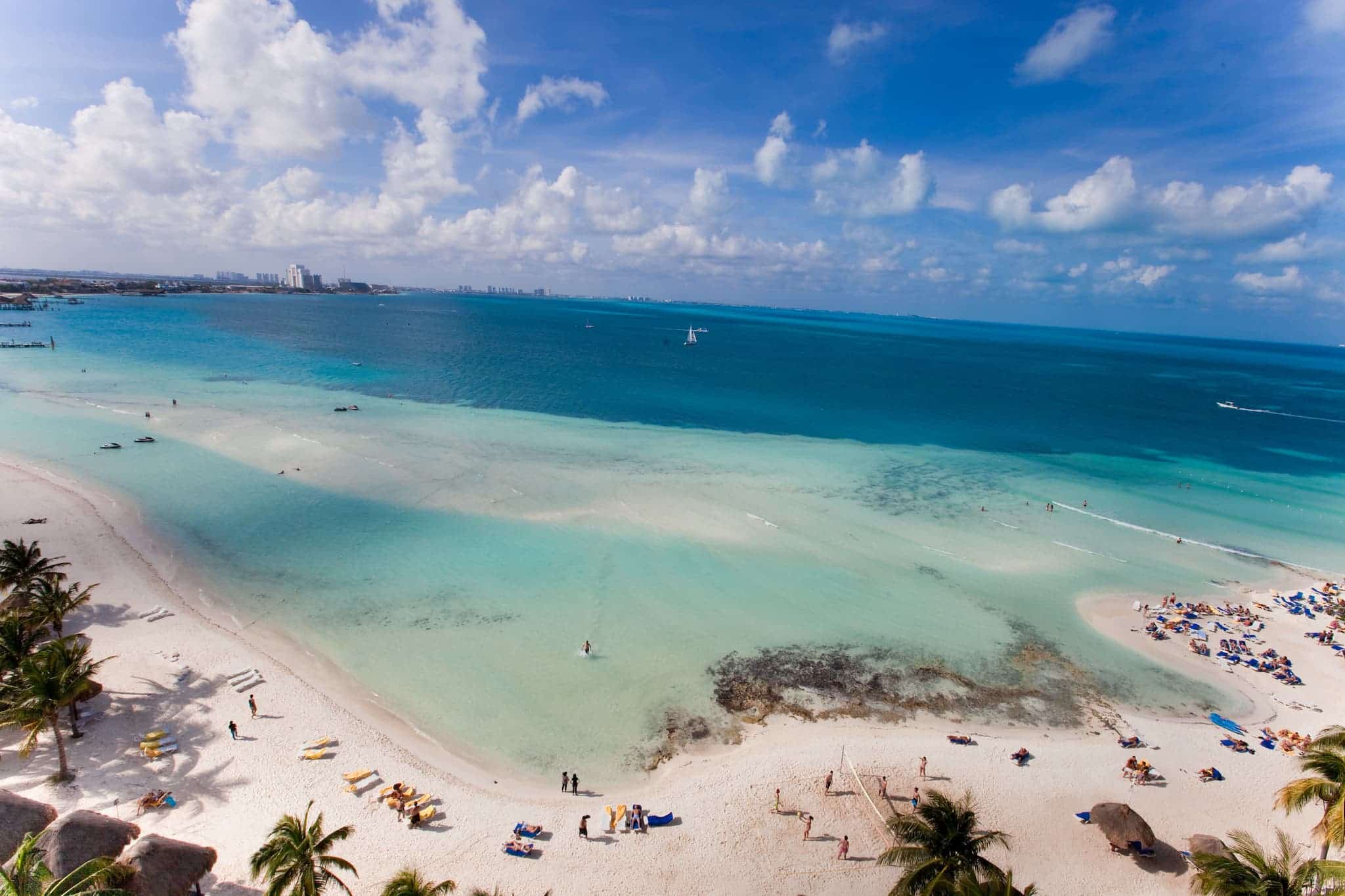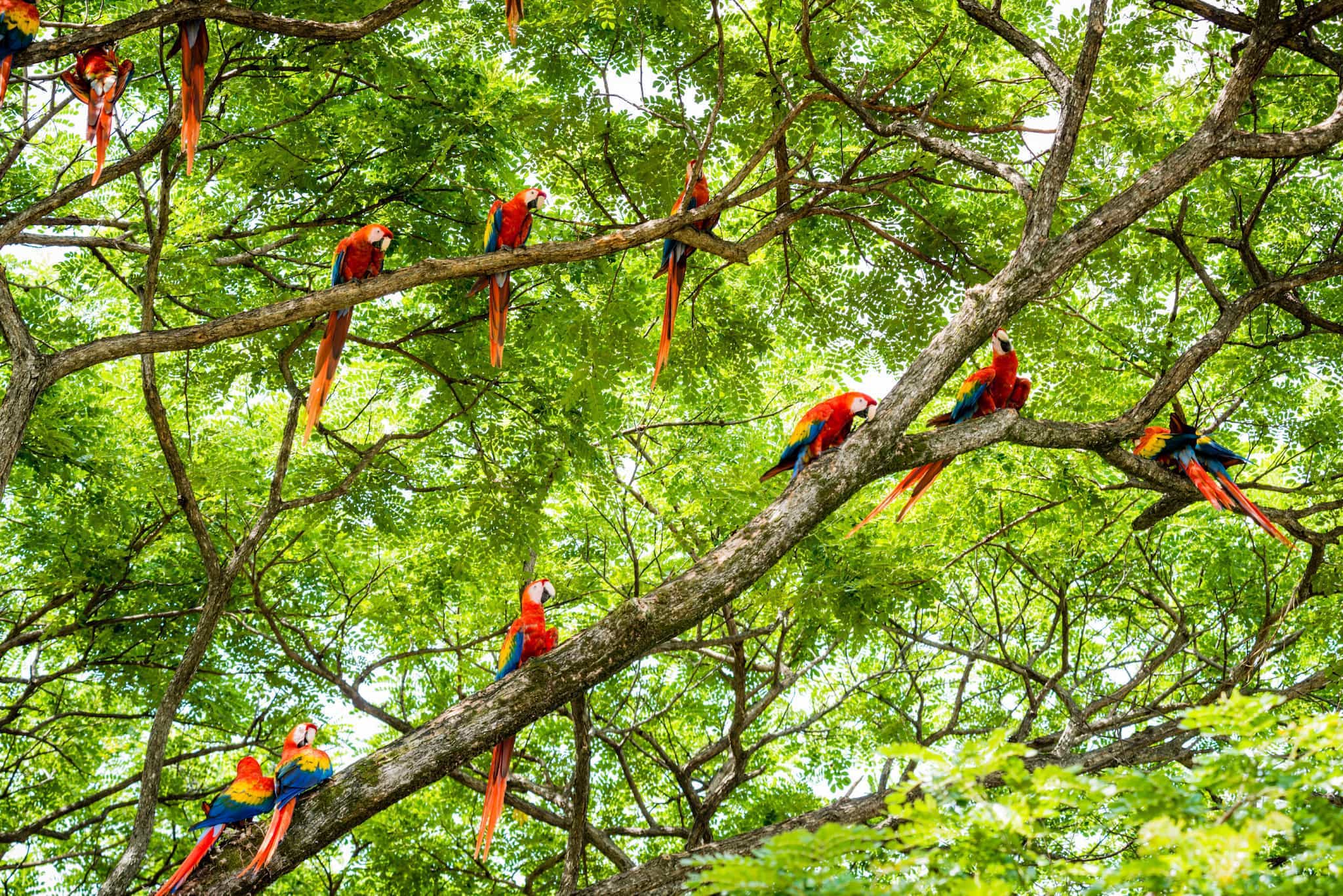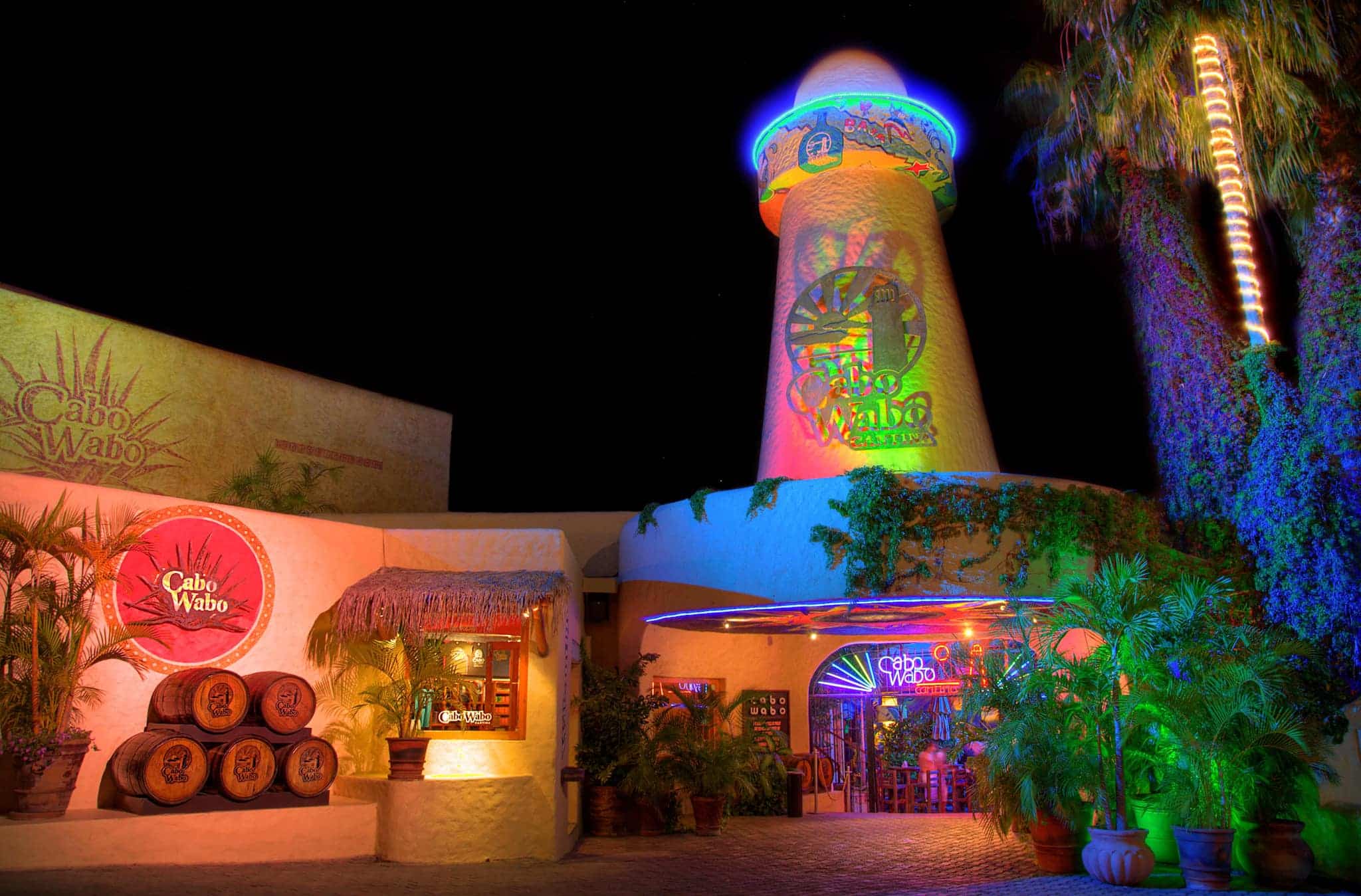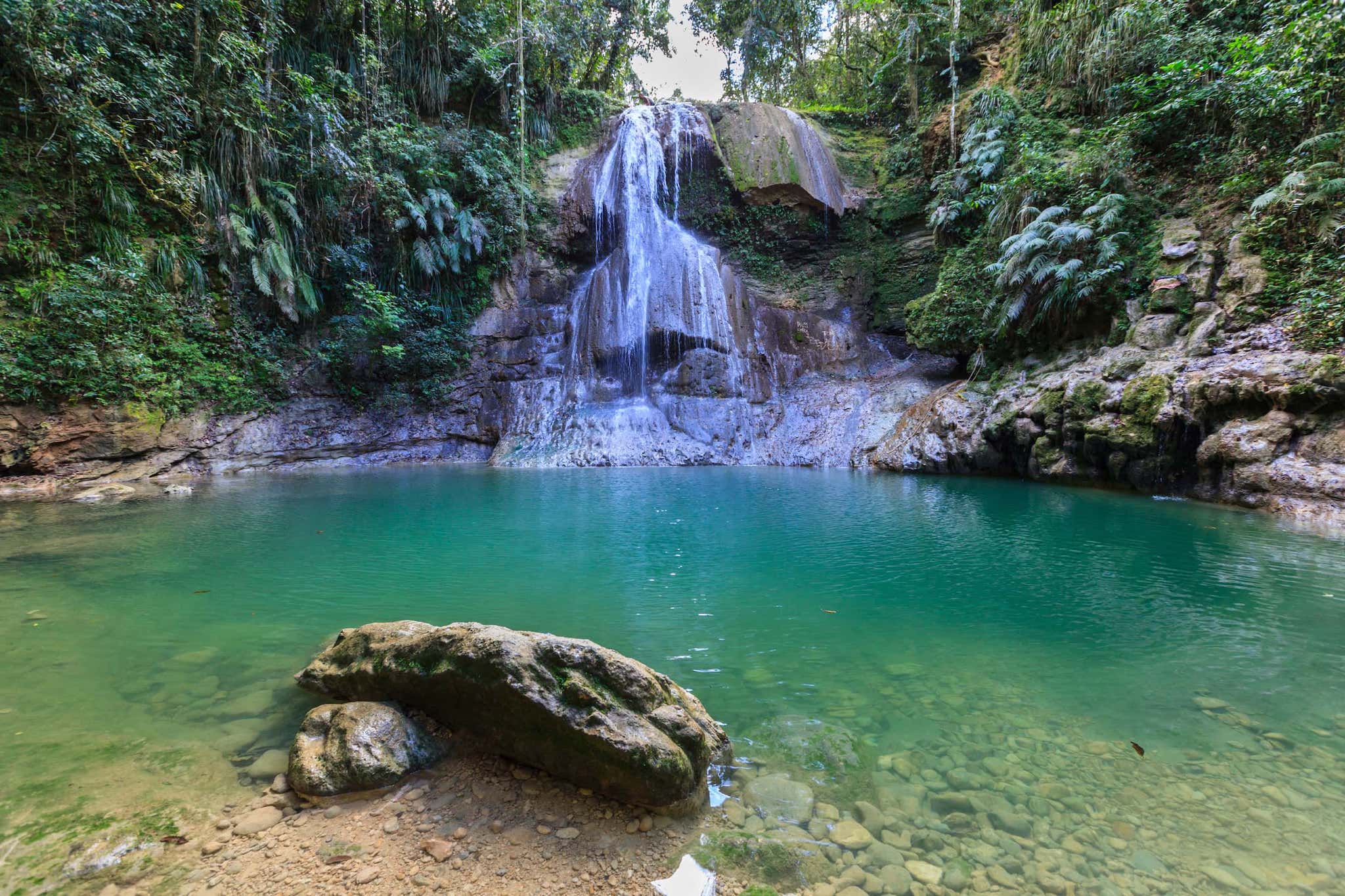Humans aren’t the only mammals who travel to frolic and relax in warm tropical waters each winter. Starting in early fall, whales depart arctic feeding grounds and swim thousands of miles south to seek out sheltered and shallow coastal waters where suitors vie for mates, and mom’s birth and nurture young calves. These activities take place at a select number of sites along Mexico’s western coast, giving humans a unique opportunity to get an up-close look at some of the largest animals on the planet.
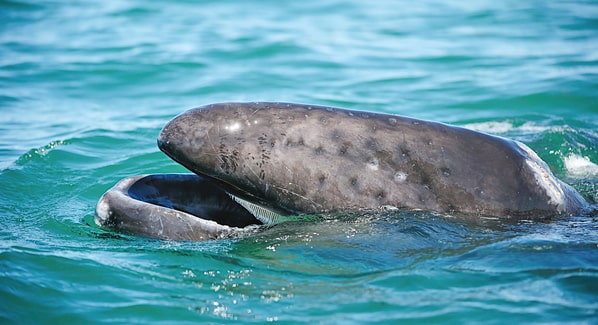
Cabo San Lucas
The Sea of Cortez is a favorite winter destination for a number of different species of whale, and to reach these waters, they first have to swim around the southern tip of the Baja Peninsula, which puts Cabo San Lucas right in their path. Unlike some destinations, which are known for harboring one particular species of whale, Cabo welcomes a diverse mix of animals. Gray and humpback whales are commonly seen, but there’s also a chance for sightings of less-common relatives such as the minkey, sperm, fin and Bryde’s whale, and sometimes the biggest of them all, the blue whale. Whale watching excursions depart daily from the city’s marina, with a fleet that includes everything from fast inflatable speedboats to luxurious launches and leisurely sailing trips. Whale watching tours pick up in mid December, and run through early April. Operators must comply with international guidelines that assure human activity doesn’t cause undue stress to the whales.
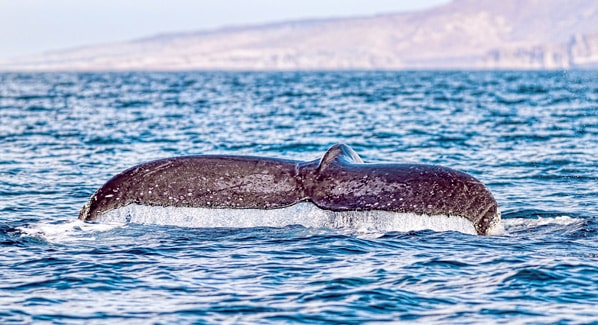
Magdalena Bay
The Sea of Cortez isn’t the only winter destination for migrating whales. A significant number of gray whales stop short of the cape, and spend the season in the sheltered waters of Magdalena Bay. This area is designated as a special reserve for the protection of the Pacific gray whale, and remains one of the specie’s primary nurseries. The grays start showing up late November, and early it’s more about mating, as the males compete for the favors. After the New Year, the fruits of previous year’s liaisons are brought to life. Moms and new calves linger the longest, and visitors who come in February and March are often treated to up-close encounters with curious youngsters. Local guides and small boats are used for such interactions, and all tours follow well-established guidelines to ensure human activity doesn’t interfere with the daily lives of the whales. There are several small hotels and eco lodges in the area, and several tour companies offer day trips for La Paz and Cabo San Lucas.
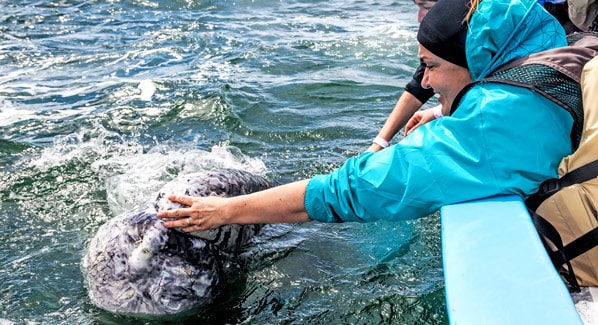
Bay of Banderas
Few things in nature can compare to the spectacle of a 50-ton animal erupting out of the water to perform the world’s largest belly flop. These are the humpbacks, the most acrobatic of all whales. Among their favorite warm water haunts is the 60-mile-long Bay of Banderas, which encompasses Puerto Vallarta and the resorts of Riviera Nayarit. They come for the usual reasons: mating, birthing and child rearing, but their above water antics add an extra dimension to whale watching trips. At times, you may see a lone whale poke it’s head out of the water, rising up to it’s pectoral fins while rotating, as if taking a peek at what’s around. Fin slaps and tail slaps are common, and every so often, watchers are treated to the signature move known as breaching. This involves the whale shooting suddenly from the water to perform a half twist, with fins extended as if trying to fly, only to come crashing down with a monstrous splash. By mid winter, as many as 600 humpbacks are splashing about the bay, and a number of charter operators provide hour- to day-long excursions to witness this spectacle.
